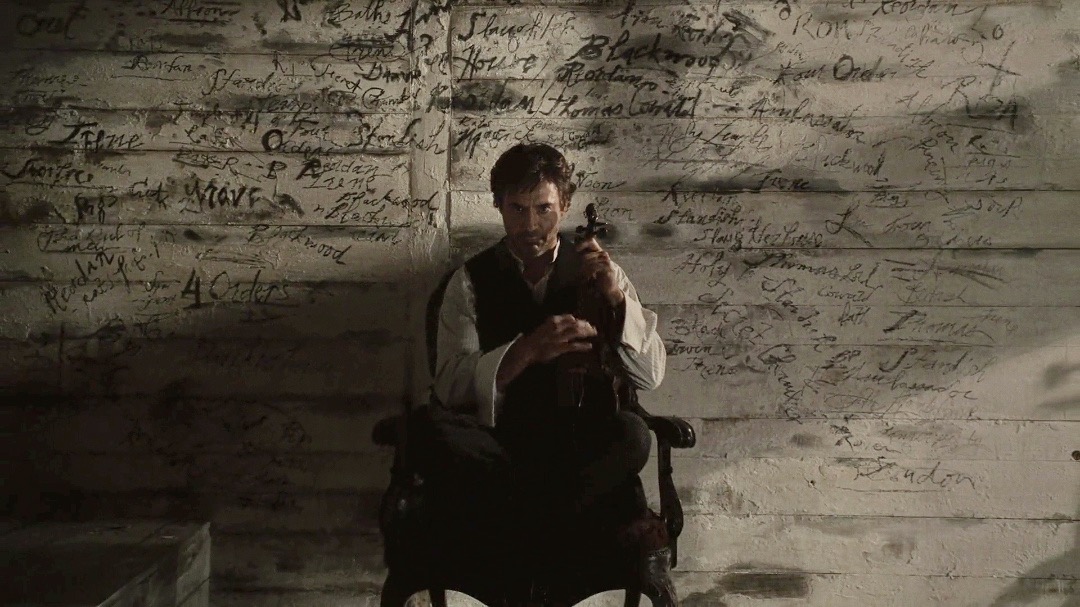They say you can’t judge a book by it’s cover, but the title will certainly help. Whether you’re a restaurant, a band, a software developer, or a publication, the name–your brand–is something you probably have or will agonize over. It needs to be original (you hope), memorable, express your values or personality, and reinforce your identity. At least, in theory this is true. In practice, however, our chief priority is to make sure it sounds cool which often times is not the best solution. If you’re fortunate, you hit upon the right name without too many dips into the trashcan to revive rejected ideas. And when it’s right, you’ll feel it’s so natural, so suitable, that you wonder why finding it required so much effort. This was certainly the case for Indievisual.
Concepts and Ideas
What is this thing I am creating and what do I want it to do? Answering these two fundamental questions were the starting point. With regard to the first question, I began looking into words which described a periodical or a collection of written information. Digital or otherwise, the concept of information presented…
(By Any Other Name, cont’d)
in a collected form remains the same. Thus, my inital notes contained words such as journal, brief, ledger, digest, quarterly, and catalogue. There are publications which use these words such as Reader’s Digest, The New England Journal of Medicine, and Gentlemen’s Quarterly (GQ) which point to a direction, but not necessarily the right direction. I also looked at how film related publications in Japan are named. There is Roadshow (a British term used to mean a movie’s premiere day), Cut, Kinema Junpo (“junpo” meaning three times per month in an old system dividing months into 10-day periods), and Hi-Ho (prounounced “hee-ho” meaning confidential information). I also thought about Japanese movie terms such crank in or crank up (the terms to express, respectively, the first day of shooting and the final day of production), as well as kippu (ticket). These were a start and such words and real-world examples began a process of inspiration and elimination. To build on this initial step, I next had to answer the second question. The intention of my publication had always been clear: “to draw attention to independent and little known filmmakers from Japan.” So, I went on to find words or phrases which abstracted the idea to the most elementary form as possible. Thus, obvious words such as Japanese and film first came to mind as well as the phrase the road not taken as an expression of the independent filmmaker taking a different path from the norm. This led to other phrases: outside of the box and for your consideration among others which started to pinpoint what the magazine’s content is about, but they were still far from becoming a “title” or brand which expressed my publication’s identity.
Brainstorming and Early Contenders
The thesaurus can be a great friend and great enemy as well. It can bring up a term, which for all your brain wracking, never surfaced or it can send you down a misguided path. Some early brainstormed terms were spotlight, telltale, and ballyhoo. I also thought about moviemaking terms and phrases such as b-roll, fade in, and first take. These began to express something cinematic and sounded “interesting” but still lacked character. So, I began combining words together as well as incorporating terms describing a publication–mostly to mediocre or ill effect: Spotlight Quarterly, Film Consideration, Picture Edge, Road Not Taken (as is), Marquee Voice, B-Roll Journal, Focalogue (a poor riff on focal length), Telltale Confidential (a great title…for a pulp fiction magazine), Outsider Dispatch, etc. Some of there are certainly cool, edgy, and would look great on the top of a cover, but they do not succeed in the intent. Most importantly, they fail in a few key points. First, they lack any suggestion of independent moviemaking. While there are allusions to “edginess” or being “off the beaten path”, a strong sense of movies made by independent filmmakers is not present. Second, there is absolutely no indication the publication is specifically about Japanese filmmakers. Third, these titles lacked distinction; all are great as titles for a variety of topics, but they aren’t unique. Looking through them, one could swear you might have seen something like it before. Therefore, bearing these points in mind, I decided to go back to the drawing board.

The (preliminary) “eureka” moment captured on paper.
Prime Candidates and a Rethink
In terms of expressing the concept of independent movies and movie makers, there could be no better replacement for the word itself, or indie, its abbreviated form expressing the attitude or at the very least, the sub-culture. For indicating a focus on Japanese filmmakers, I could have just used the word itself, or as with independent used the commonly used abbreviation of “J-” as in J-Pop (pop music from Japan). However, this seemed generic. After a great deal of thought, it occured to me to use the word eiga (pronounced “ey-ga”) which is the romanized form of the Japanese characters for “movie.” It certainlyl had the advantage of perfectly encapsulating both “Japanese” and “movie” in a single word. When I thought of the two together, the term Indie Eiga was born. It sounded right and was distinctive thus fulfilling all three criteria I felt were necessary for the magazine’s identity. I wrote it down in many places and even began using it as a tag in files related to the then amorphous “magazine project”. For all intents and purposes, this was the title. But suddenly, a filmmaking term, Focus Puller (the person operating the focus ring while scenes are being shot), popped into my had. I liked its symbolic representation of drawing the focus of the reader to the filmmakers interviewed in the magazine. Though it did not meet the conditions of expressing “indepedent” or “indie” filmmaking nor any sense of an emphasis on Japanese filmmakers, it really sounded cool (remember what I said before). In the end, however, I decided the concepts of “independent Japanese filmmaking” were more important and made Indie Eiga the official title of the magazine.
Then, I ran into a slight snag. When I proposed the title to 29th Street Publishing’s, then, editorial director, Blake Eskin, he informed me such clever naming presents problems with discovery (on the Apple App Store). He cited Letter to Jane and V is for Victory (an indepedent sports magazine) as titles they published with such difficulties. Blake suggested being straightforward such as “Japenese Independent Film,” but in all honesty, I was resistant to something so plain. Nevertheless, I had to at least consider his advice. In reality, when you look at the newsstand, many magazines do have straightforward titles: Car and Driver, Travel and Leisure, Filmmaker Magazine, Rod and Reel, and so on. You know what the magazine is about and the titles are easy to remember. So, I considered two approaches I could take. One was adding a sub-title to Indie Eiga, and the other was some iteration of Blake’s suggestion. For the sub-title, I went through several variations of descriptive titles and ultimately settled on Japanese Movie Alternatives thus, Indie Eiga – Japanese Movie Alternatives. As for a strictly descriptive title, a rejected sub-title ultimately became the best candidate: Japanese Indie Filmographie (the French spelling was meant to give it a more distinctive touch). I sat on these for a couple weeks just to see how they would age. But after that time, nothing better came to mind and I was at least satisfied enough with these to propose them to Blake. He was, thankfully, in favor of the sub-title idea so I could at least still keep Indie Eiga. With that, the project was christened Indie Eiga-Japanese Movie Alternatives.
Rethink II
You might have noticed at no time has the title by which the magazine currently operates been mentioned. This is because it was never intended for the magazine. After settling on Indie Eiga, I moved on to naming the online visibility management service I intended to start of which Indie Eiga was a complementary activity. I went through the exact same–and admittedly much more torturous–process as described above before settling on a name. I ran the idea and preliminary logo designs with a very good producer friend who has a background in graphic design. He liked what he saw, and helped me settle on a logo. I then secured the domain name for the business. However, my friend did feel there was still perhaps another idea just on the periphery of realization. So I thought about it. That is when the notion of using the word individual suddenly became obvious. Phonetically, indie and indi(vidual) were the same.Visual was just one letter removed from (indi)vidual. Indievisual sounded like the perfect name for a business promoting visual creators. I ran this by my friend who took to it almost immediatly. Then he asked a very compelling question: why seperate brand identities for the magazine and the online PR business? I literally had no response to give. It quickly dawned on me that Indievisual met almost every requirement: “indie” or “independent” was represented; so, too, were “visual arts” of which movies are included (also addressing experimental or non-narrative video art); and most importantly, the individual creator was practically represented by the word itself. Only an indication of Japanese cinema was missing, but Blake’s approval of the sub-titled Indie Eiga indicated to me there would be no problem as long as I emphasized Japanese movies and creators are the core focus in all descriptions and explanations. Thus, Indievisual became both a brand identity and the title for the magazine.
For all the effort exerted over several weeks, that is how the magazine title came to be. The right solution came as a result of a brief spark of inspiration triggered by the astute feedback and questioning of a friend. It only goes to show how you will certainly have passed by the perfect answer a few times along the journey before you stumble upon it. But when it’s right, you just know it.
